We’re designing a curve-friendly blazer sewing pattern, and it’s time to get the party started!
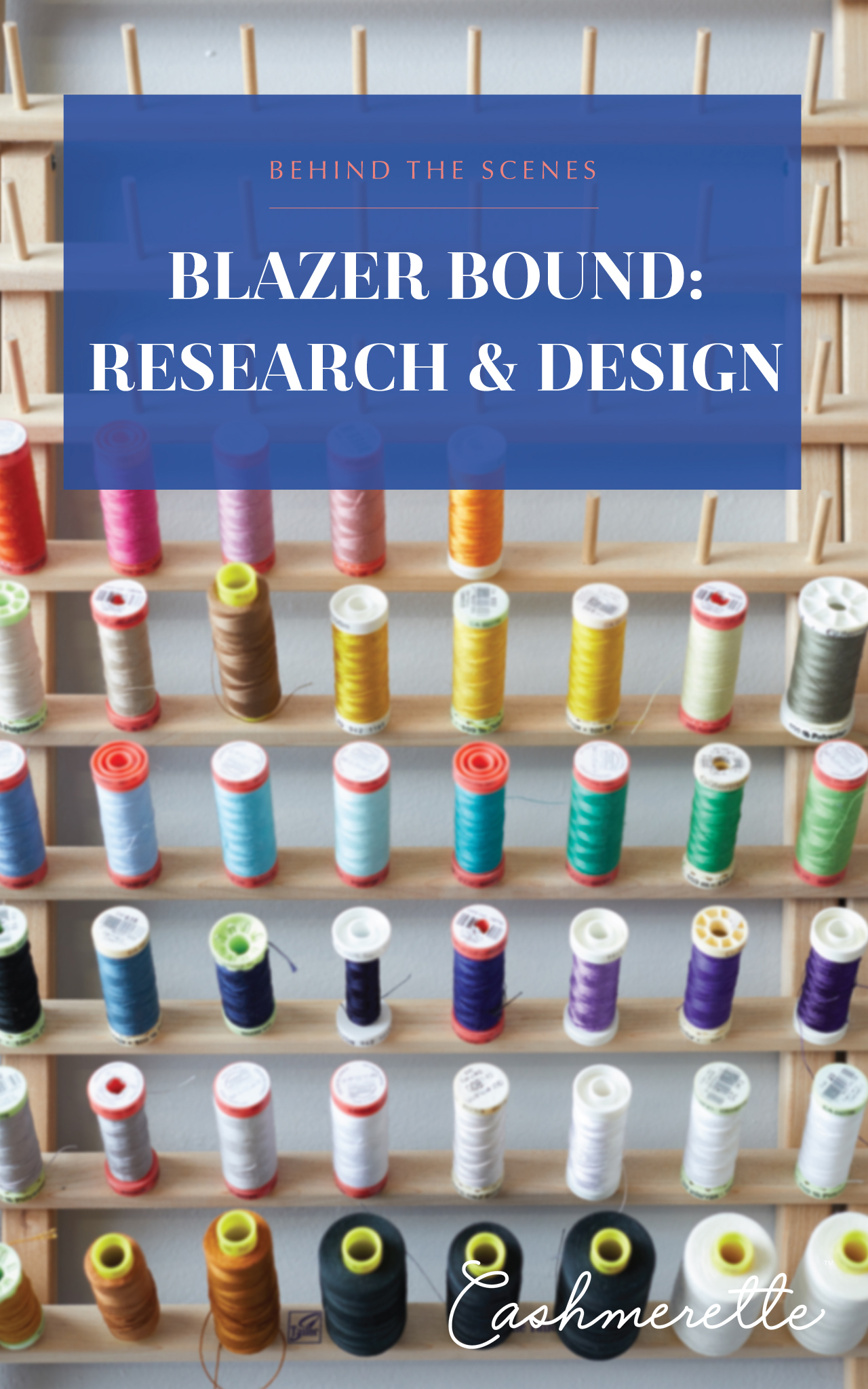
(Learn what this series is all about here).
Why a blazer?
We’ve known for a while now that we want to add a blazer pattern to the Cashmerette collection for a number of reasons, not least of which is that you all tell us you want a blazer every time we release a new pattern. The blazer is a timeless tailored garment, traditionally part of a workwear wardrobe but now an essential layering piece for everyday wear as well. When we wear blazers, we tend to feel more confident, more put together, and more like the badass bosses that we are—so we all deserve a blazer that fits us flawlessly.
But ready-to-wear blazers are also known to be somewhat (and in some cases, very) uncomfortable to wear when you’re curvy. Whether the front is pulling uncomfortable in the center to accommodate a larger bust and/or belly, or the back is restricting your arm movement, or the sleeves are feeling tight against a full bicep, a typical blazer right off the rack likely won’t fit the way you need it to, and will leave you feeling uncomfortable and unconfident. What’s more, blazer sewing patterns typically imitate ready-to-wear blazer designs, and altering such a complex pattern for a better fit can be hard for sewists of any skill level.
So we want to fix all that! Here at Cashmerette, we’re all about making the styles we want to wear work for our curves, and we thrive on a challenge like this. You want to wear blazers, so we’re going to make it happen.
So what happens first?
Okay, so we’ve decided we’re going to be designing a blazer. We need to design the general look of it, but first we’re going to do a bunch of research to get ideas and figure out what decisions we need to make.
Blazers come in so many different shapes and styles, as you’ll see in some of the research we’ve collected below. As we start to get ideas and fall in love with particular designs, we need to keep in mind our criteria for this particular pattern, to make sure the design we come up with matches our goals:
- The design needs to accommodate a large bust. (Duh!)
- It needs to look good closed and open. We want this blazer to look good done up, but also not have an overload of fabric in the bust when worn open for a more casual look.
- It needs to allow for a full range of motion of the arms. No garment should restrict your range of movement, not even a blazer.
- It needs to accommodate grading between sizes. We know that many of our customers have measurements that fall into different sizes, and grading between sizes is a common adjustment sewists make. This pattern can’t have a million pieces that make it impossible for someone to grade between sizes.
We also want it to be stylish and fun to sew, wear and hack—and of course we can do it all because we’re the blazer fairies!
Digging into blazer designs
Time to start researching! Pinterest is always our best friend when it comes to getting ideas (you can check out our blazer Pinterest board to see some more curvy blazer inspiration we’re loving) but we also try on lots of ready-to-wear samples. And in this case, we also asked you what features you wanted to see on the blazer in our Facebook community group. You had a lot of feedback for us, and there was strong support for all types of blazers.
Let’s take a look at a few of the types we need to consider.
Woven versus knit
A traditional blazer is made from woven suiting fabric, but the advent of stable knits like ponte and scuba has changed the whole game for blazers. The stretch of ponte allows for that greater arm movement we’re going for (and more comfort in the arms for fuller biceps), while still looking crisp and sharp for officewear. Knits are also much easier to fit and have a softer feel on your skin, so all signs are pointing to a knit blazer.
Of course, every design decision we make at Cashmerette has some people cheering and some people booing. There are some of you who only want a woven blazer! But, drafting a woven and knit blazer is totally different, so we had to make a decisive choice before moving forward. For now, we’re going the route of a heavy knit, but we’re going to see if it works in a stretch woven too, which would expand the possibilities. Plus, it’s possible we could do a woven blazer in the future! As you can imagine, this type of decision-making is one of the hardest parts of our design process.
Boxy versus fitted
Boxier blazers or suit jackets can be super stylish—I feel like I’m always seeing celebs in magazines wearing them for going to the grocery store (what happened to good old sweatpants?) or picking up coffee to go. It’s a cool look for sure! But you’re more likely to find a ready-to-wear boxy blazer that fits right off the rack than a fitted one, so rather than give you more of what you can already get, we’re going to go for a fitted blazer. You’ve got curves, so let’s show them off! Getting the right amount of fitted will be key as we develop the pattern: fitting and skimming in the right places, and definitely not too tight or uncomfortable.
Single- versus double-breasted
We saw some pretty rad double-breasted blazers in our research. But double-breasted blazers are harder to wear open, and if we’re sticking with our original criteria, we’ve gotta go with single-breasted.
Unlined versus lined
Half the fun of sewing outerwear is picking cool contrast fabrics for the lining. You can have a totally tasteful outer fabric and a totally wild lining fabric and your officemates will be none the wiser. (Unless you go around showing off your crazy linings to people like I do.) But if our blazer is made with a knit, we can skip the lining all together for an easier sew all around, making the pattern quicker and more accessible for beginners.
This is a question for more thought: we may try with and without a lining in the development, and look at the alternatives to lining, like bound seam allowances. The other consideration is the cost of development and printing; because of our three cup sizes we already print a lot more pattern pieces than most sewing patterns, and it can really affect the profitability of a pattern. We’ll have to look at how complex this is turning out, and what we can afford.
Design details
This is possibly the most fun step of the process: choosing which features and special touches our pattern will have. When it comes to a blazer, there are so many options for the pockets, collar and lapel, the sleeve hems, the closures, and so on. At this stage of the process, we’re definitely keeping these options in mind, but we want to nail the basic fit of the garment first, so we’re holding off on making any decisions that don’t directly impact the overall fit at this point.
Up next: the first muslin!
Following our extensive research process and weighing what we found against our criteria, we’ve decided on a single-breasted, fitted knit blazer. Up next, we’re going to be briefing our pattern drafter so that she can create the first iteration of the pattern pieces for us to sew up our first muslin. We’ll talk all about that process in our next blog post in this series, so stay tuned!
What do you think about the different blazer styles we explored? Do you have any particular styles you’d love to sew up and wear? Let us know in the comments below!

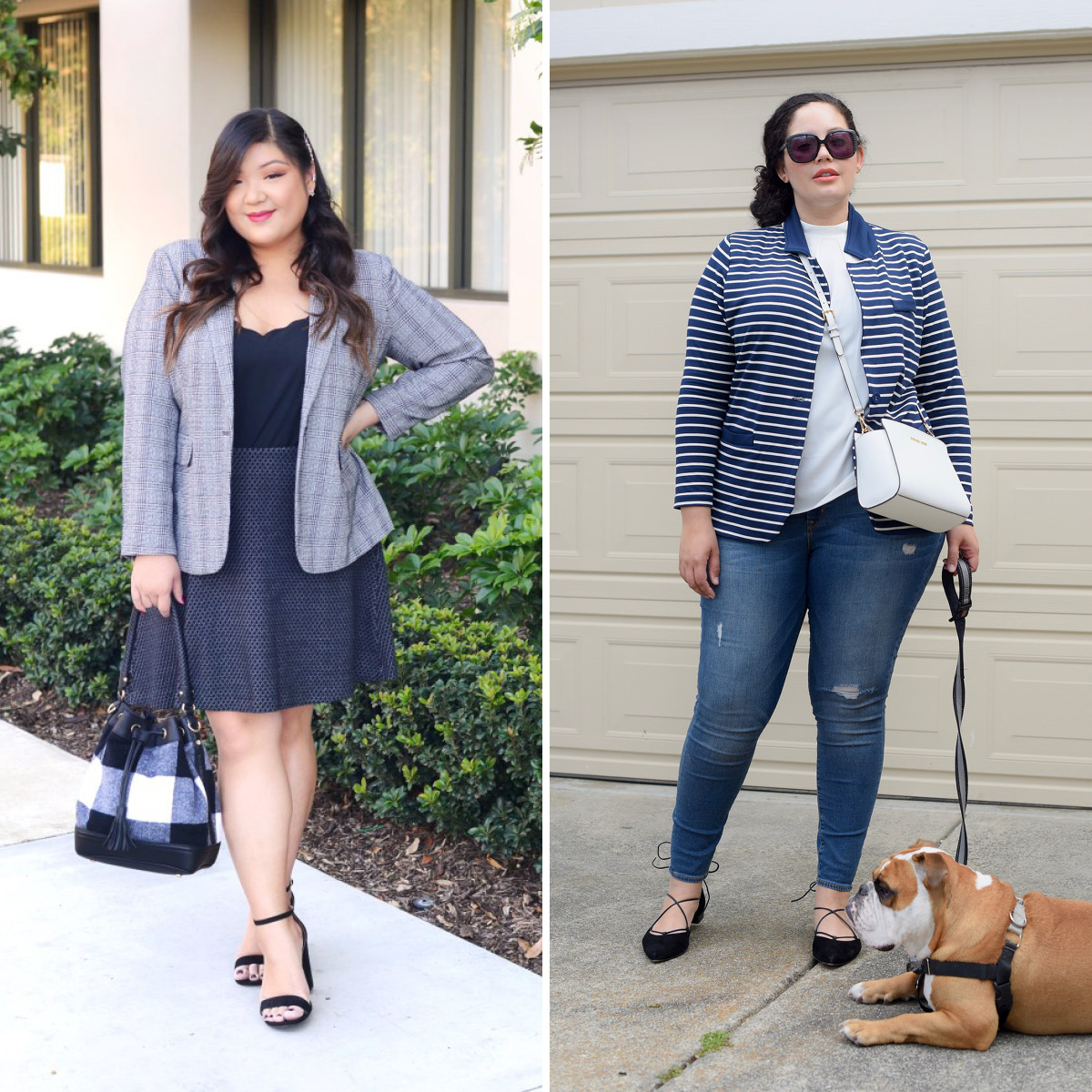
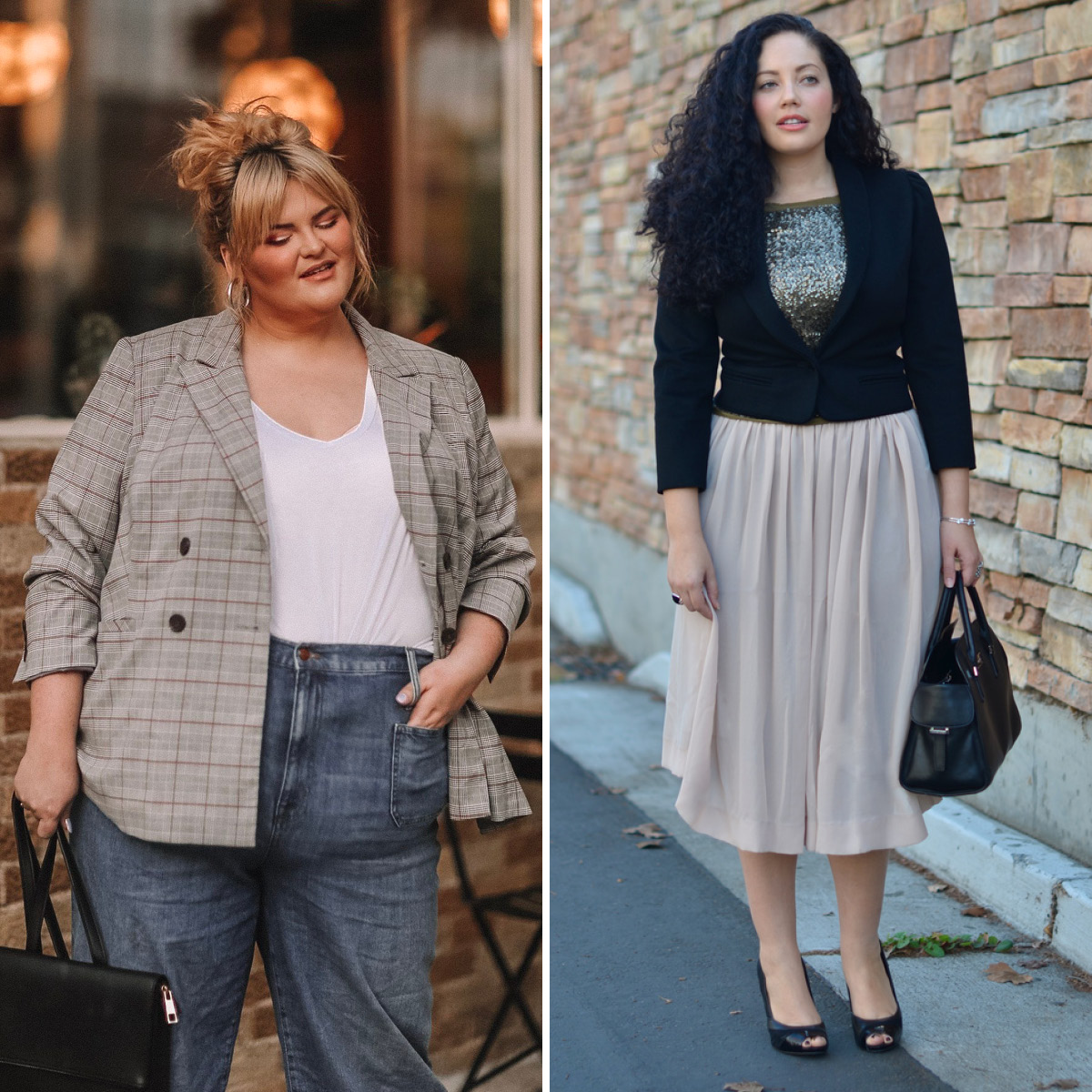
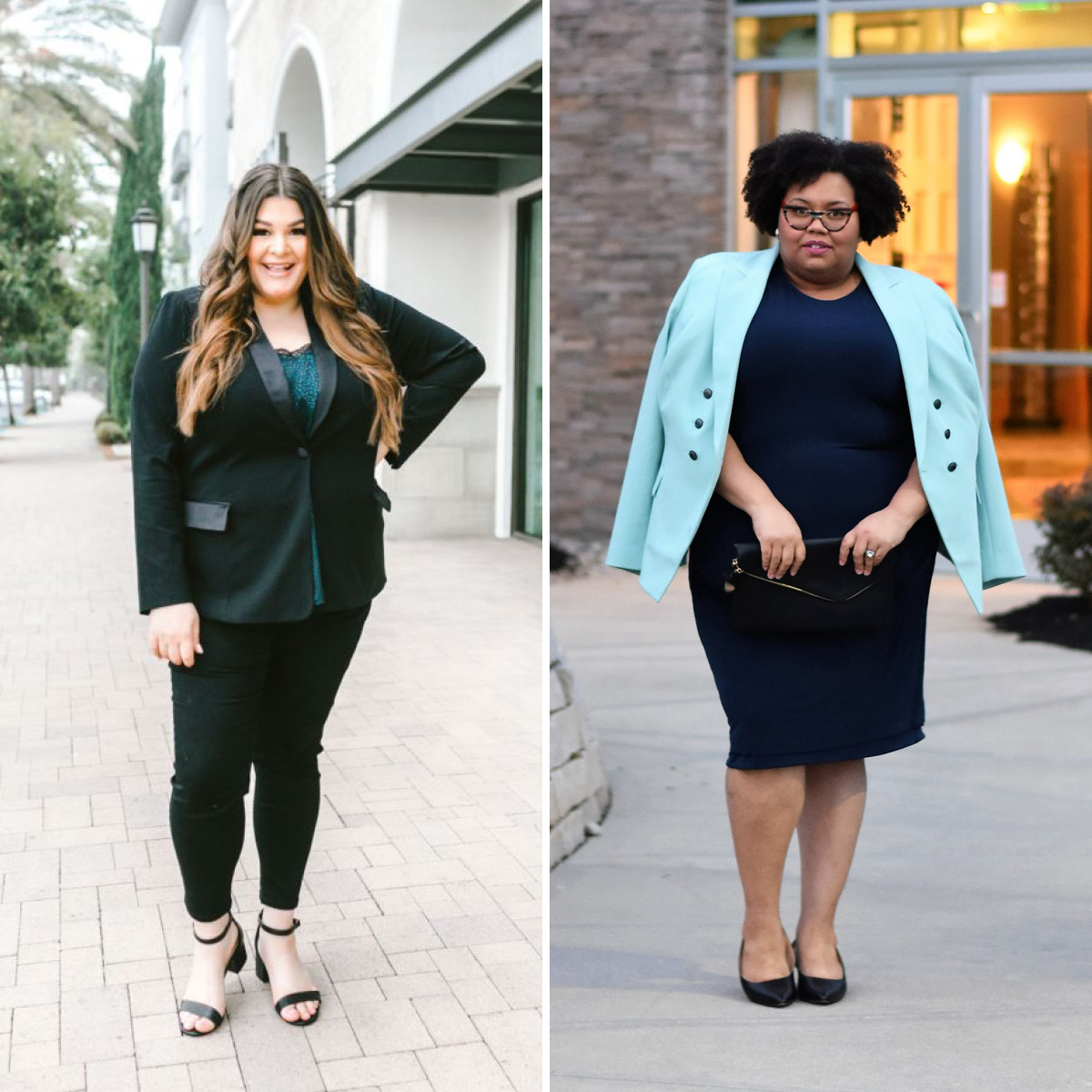
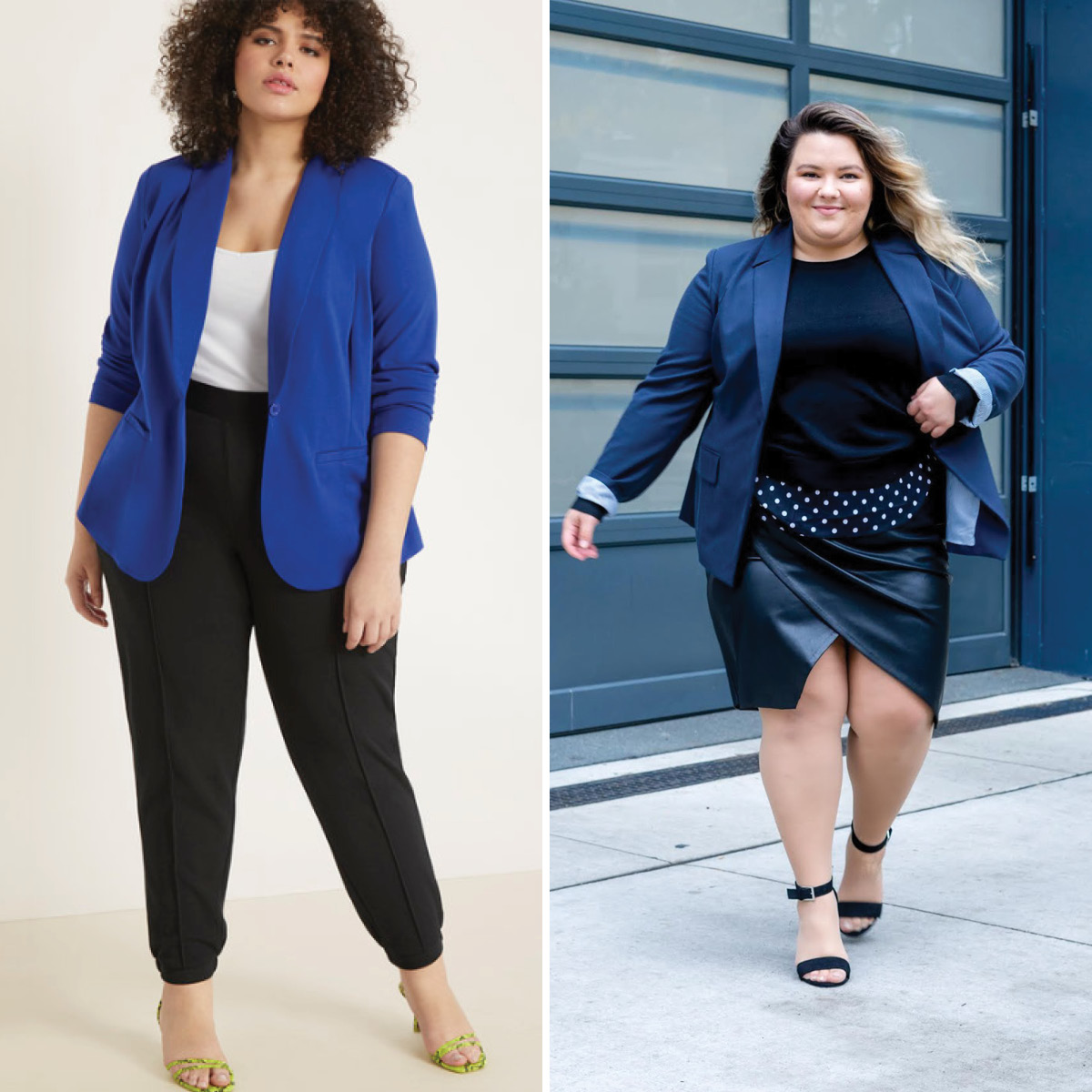
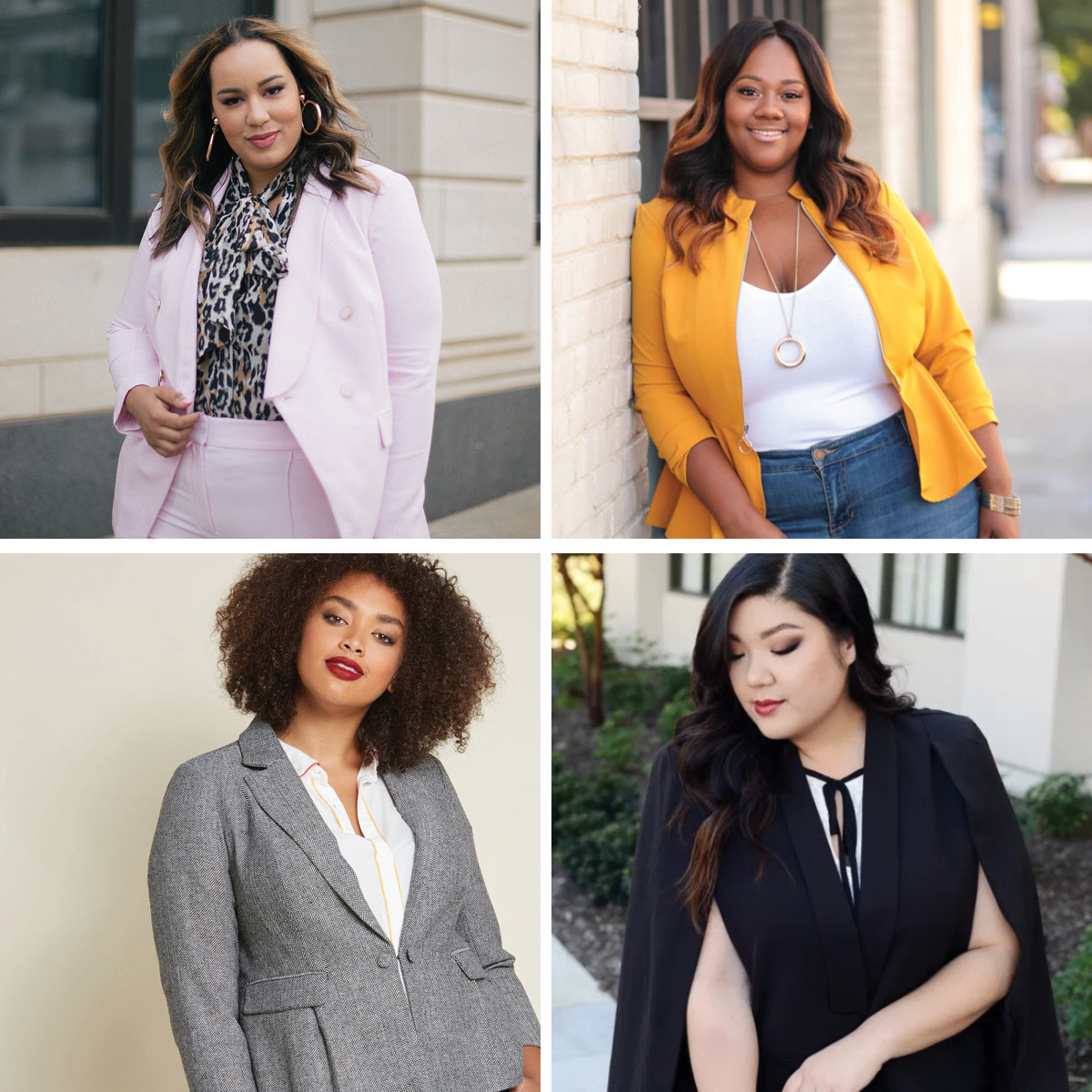
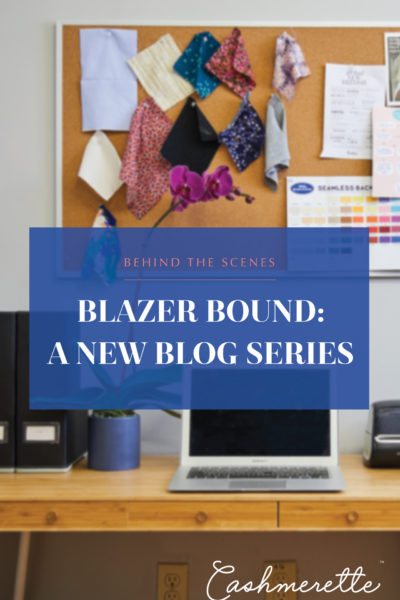
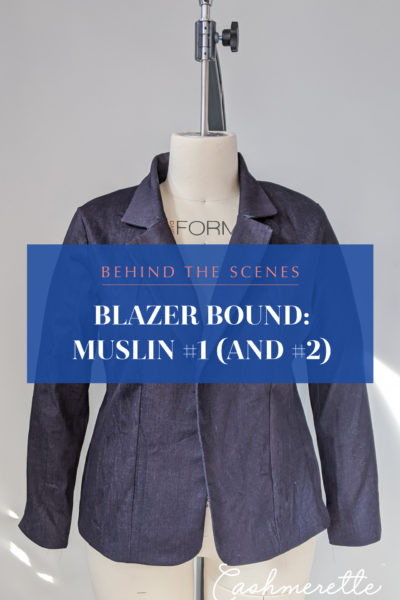

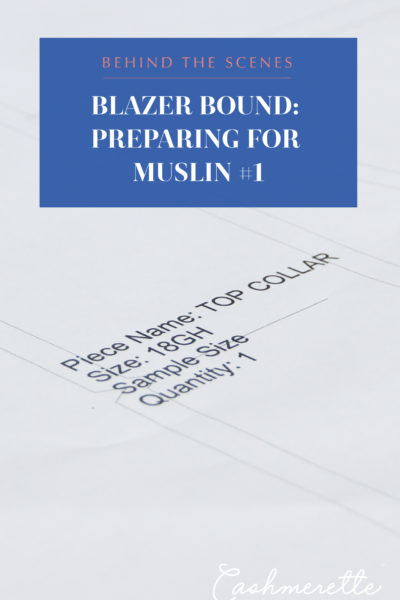
Sounds wonderful. I would love lining option. Could you offer lining pieces as PDF only? And rest of pattern in printed + PDF versions.
Definitely a possibility!
Great! I’m for the knit version too as it would be so comfortable and there are woven versions out there already. Can’t wait!
This is do fascinating. I really appreciate hearing about the issues you consider when thinking about the concept. I think it will help people also understand why the final product is what it is. Yeah for a knit blazer…which will be so much more comfortable to wear! Thank you!
Thanks Sierra! I definitely find knit blazers much more wearable on a daily basis. And with a nice crisp heavy knit and interfacing I think they can look really polished.
I don’t really feel a knit blazer needs lining. I think it all sounds great so far. I’m with you on stable knit, single breasted, non boxy, though I would probably not make mine tooooo fitted!
One point I would consider is where the top button and bottom of the V goes (if you are doing V neck, which is classic, so expect you are!) i find that boob level is good! Most flattering on me. If it’s too high, I look like I’m all chest!
It will be interesting to try out the lining and see what happens! One of our inspiration RTW blazers is knit with a jersey lining and it seems to work quite well but I’m not sure if it really ADDS anything, if you know what I mean. We will try it both ways likely and see!
Would you need the lining if we wanted to have an inside pocket? I’m a n00b, so hopefully this isn’t a totally goofy question! Thx!! Cant wait til the pattern is out and I really look forward to reading more about this process!!
Jenn P
This is good research. When I was a smaller size I used to wear blazers frequently for work and for a cool casual look. The Chanel-style boxy blazer in a textured tweed (?) with a round neck and no lapel was my favourite. I liked how it could look formal when I dressed it up, or it could look cute when worn with ripped jeans. I love your style so I’m already confident that what you put together will be awesome 🙂 Thanks for the fun blog to follow you on the journey. Happy pattern-making!
Those boxy Chanel-style blazers are so chic but somehow never looked good on me with the boobs, but maybe I should give them another go!
Thanks for sharing the process with us! This is so interesting!
I was so disappointed that you have decided to go with a knit blazer rather than a traditional woven one. I was looking forward to a woven, lined blazer that had traditional tailored structure and crispness and could be used as half of a two-piece suit as well as for a stand-alone jacket. I don’t care for knits apart from T-shirts and jumpers. Keeping my fingers crossed for that woven, lined version soon.
I’m sorry you’re disappointed – sadly whatever route we choose, it won’t be what some people want.
I am excited that you are finally doing a fitted blazer but am so disappointed that you chose double knit. For those of us that do not live in larger centers good double knit fabric is not easy to find. And if you don’t live in the US on line shopping is limited. Double knit jackets do not look as professional for an office in my experience. So guess I will have to wait longer.
As we wrote above, sadly whatever we choose some people will be disappointed. However, we will be looking at whether stretch wovens work, and also whether we can do kits to maximise the availability of the right type of fabric.
I agree with the first poster on wanting a pdf lining. Any top layer should have a silky lining IMO. It looks more polished because it doesn’t catch on your other layers, it reduces bulky seams, & it feels great too.
I LOVE that you’re trying to reduce the bulk in the chest area so it looks good open. That’s a big deal to me, and has stoped me from buying so many RTW jackets over the years.
Also I left a comment on the first post without realizing there was a style post. To recap: princess seams ending in the armscye are an aesthetic turn off for me. I’m hoping for a darted option:).
Thank you for all the work you’re putting into this!!!
Yes! Yes! Yes! And Yay! lol – I love the choices – fitted, single breasted, heavy stable knit/stretch woven (sooo comfy yet looks polished), lined or unlined?? I love the princess seams as it defines a waist. Can’t wait!
Murphyallen
Oh yeah – and the placement of buttons is crucial! A high stance works for larger busts – at least mine. When they are lower the front gaps open. That’s always the biggest challenge for me.
Murphyallen
I’m more of a wovens fan, but Sew over it have the fitted Francine jacket, and Closet case patterns have the Jasika blazer- with cup sizes. Both have online classes to go with them, so I feel that wovens are actually catered for. I have some rather lovely double knit wool jersey that i’ve been waiting for the right pattern to use for. So bring on your knit fabric blazer, you could also have the sleeves only lined to make it easier to take on and off. Love your patterns and the whole Cashmerette concept. Thankyou for taking us along on the blazer journey, there really is a lot to consider.
I’m a fan of wovens more than double knit. I think that it is a more classic choice and provides more structure than a knit ever will even if it is a heavy knit. I also consider a woven to be a more professional look that can be created into a suit. I like the idea of single breasted and agree that a lining isn’t really required for a knit. It sounds like you’ll be creating a more casual blazer look which is still beneficial. Do what works best for your target market.
I understand your decisions, but am going to lodge my thoughts anyway. I would much prefer a woven blazer, and one with a lining. It took me a long time when I began sewing to work up the courage to tackle linings for jackets, but once I did, I never looked back. They are so much more comfortable to wear and to get on and off. And linings allow for interior pockets! Please consider interior pockets, once you get to linings.
Will be looking forward to whatever you decide. And in the meantime, I’ll check out the other woven blazer patterns mentioned above.
Thank you! I have been longing for a blazer pattern that would not require too many adjustments to fit me. Your choices so far have the ring of truth in them. I echo the previous posters who have expressed concern over the placement of buttons, especially the all important top button. They are right, that placement will make or break the look of the jacket. For a decorative touch, may I suggest a sewn in slanted pocket. I think that would give the jacket just a lovely subtle difference. I know that Peplums are all the rage at the moment, but this will not be a classic look. So far your patterns are classic staples that will stand the test of time.
Thank you so much for letting us peek into the design process! Already you have so much different feedback… I understand you have to make decisions for what you know of the market, not only for a few commenters.
But for what it’s worth, I love your decisions so far! I had been thinking of a woven too, at first. But I know it’d be a huge learning curve for me, even if you also offer a course. So I know I’d have sewn it in a knit in the end, haha. Fitted sounds perfect. I’ll also give a huge thumbs up to enough space to move in the arms and shoulders! I hate blazers that only look good if you stand like a mannequin, but are super restrictive if you move. I teach, so I need to look professional but also lift my arms to write on the board.
I’m really looking forward to this!
Glad you are going for the single breasted design. Double breasted blazers tend to widen a person’s look and I really don’t need to look any wider than I already am! LOL. I really like you allowing us to see how the process works from stage to stage. It will be very interesting! I am looking forward to each new posting.
As you pointed out – no matter what you design, some of your customers will be disappointed. But so far the design decisions you have made make sense. Allowing us to follow the process will help alleviate the disappointment. I’m sure many are dreaming of a Cashmerette pattern for a woven jacket in the future.
In the right fabric, knit separates can create very nice, professional looking outfits for all but the most formal careers requiring suits. And comfort approaches the secret pajama level when you are wearing knits that fit well – always a plus! Looking forward to seeing the final design – and maybe I’ll decide I still need a jacket or two in retirement.
I love “seeing” the design process – thanks for the peek inside!
I didn’t notice whether the blazer will have traditional lapels or a shawl collar and perhaps you’ll have an option for both? I prefer shawl collars as the peaked lapels are so…staid. OK, maybe “classic” is a better word but of the two I think shawl collars are much more flattering.
Regardless, I’m enjoying the posts.
Yay! Super exciting. Can’t wait to see what you come up with.
Thank you so much. This is the first design you have let us in on so far in advance. Anticipation is a good thing. Even in a knit fitted blazer sleeves are very very important. I would so like to see a 2 piece sleeve with darts at the elbows. This makes the sleeve fit so much better. And easier to do a full bicep alteration. I agree that knits don’t need lining but I think that even a partial lining works so much better when sliding them on over a sleeved blouse.
I own both stable knit and woven blazers, and the knit blazers get much, much more wear. Not only are they more comfortable, I like how they provide more structure than a cardigan (as a topper), but I’m also not afraid that I look like I’m going to a job interview in a knit blazer.
Yay for a blazer pattern! I would prefer a singe breasted, fitted blazer with smaller lapels and the option for a lining. I think this is the most versatile garment for bigger sizes. there are enough patterns for boxy jackets on the market.
Oh, this is sounding like the perfect blazer to me! Single breasted, knit fabric and fitted…pattern dreams really do come true at the fairy godesses *Cashmerette* 🙂
A collarless option would be great. I see a lot of those these days but cannot find one in RTW or a pattern that hangs right over the girls. Seems like they need more fabric, or deeper bust dart. I’m sure you’ll address both of those problems, but smoothe V w no collar option is my request.
I really enjoy getting a behind-the-scenes view of the pattern development. It makes me feel like I’m involved in the process. I am really excited about having a knit blazer. Most of the woven blazers that I found never quite fit. I usually am not able to cross my arms or even drive. I’m excited about the range of motion that we will have a knit blazer, and I think that styling could make all the difference. I wear knits in a professional setting all of the time. It comes down to fit, fabric, and styling. I am really excited to be able to add a blazer to my me made wardrobe.
Could you offer detailed instructions on drafting a lining? I always do this when making a coat or jacket, because I’ve made adjustments to the original pattern already. I find it easier to simply trace your adjusted pieces and add in the extra ease necessary than to remember make all the same adjustments to the lining pieces. I use the method outlined in ‘Tailoring: the Classic Guide to Sewing the Perfect Jacket’, Tho it may be different for knits. This would give a detailed option for the lining (crucial for ambitious beginners who might not know it‘a a possibility without instructions) while reducing the printed pages that could cut into profits.
While I appreciate the efforts you guys are putting into letting us in on the design process – there are a lot of decisions to make! I have been waiting for Cashmerette to come out with a blazer since you guys started up, but it sounds like I’m going to have to pass on this pattern – knit fabric is a deal breaker for me.
You’ve obviously put more thought than I ever have into a blazer! (But that’s why we buy *your* patterns…) Looking forward to following along with this one. I’m sure the entire process is much more complicated and iterative than I’d be able to manage, so hats off to you for doing the hard work for us!
It’s enlightening and fascinating to hear about the pattern design and development process. Thank you for allowing us in and for asking for feedback along the way. I have never worn a knit blazer, partly because I have never tried one on that fit properly. I like the idea of being able to sew one though. I appreciate the comfort and ease of movement factors for sure. I like the basic design choices thus far and will be interested to see the finer details, pockets, collar, etc. I agree with others about the need for a sleeve lining option.
Yay for making us a blazer pattern! I think a stable knit or stretch wowen is the best option to be sure to get a blazer / jacket we would enjoy using most days, a wowen is a chalenge With the bigger sizes and bigger chests we have developed. There is a lot of Slinky fabricks With some stretch sold in the web shops that sell material for lingerie making so a lining is possible if you really want one. I would like some different options, like no colar or a small standing colar and a zip in the front- or hidden hook and eye. Would be Nice to make in thicker fabrick like a boiled wool.
I love this blog series already! It’s so interesting to get a glimpse into what goes into the design of a pattern, and I really appreciate the insight into your decision making process. I like the idea of both knit and woven blazers, but knit is so much more forgiving so I feel like it’ll be a good first-foray for me into blazer making when the pattern ultimately comes out! I especially appreciate that one of your criteria is that it needs to look good both open and closed. I’ve NEVER had a blazer (rarely even a cardigan) that does both. Looking forward to reading more on this process and to seeing the finished pattern later this year!!
I have been planning a knit blazer for a while and bought the itch to stitch la Paz jacket by itch to stitch but have really been struggling to find suitable fabric. It is quite an involved project so I want it to be nice! I like to sew with natural fibers and try and source sustainable wherever possible. So many heavy weight knits available are synthetic. I would love to see some top quality fabrics and kits coming with a blazer pattern.
I love the logic you put into the decisions (which, come to think of it, is why I LOVE your patterns). I agree with Sheila O’Kelly that you could offer the lining pieces as an expansion pack (as you did with the Upton sleeves). That way, sewists who just want an unlined jacket can buy the basic pattern and more advanced sewists who want the lined version can get the expansion. Looking forward to watching the pattern take shape.
Wish you would design a mans black blazer
Would love to give you input
William
Love a shawl collar, not double breasted. Saw an ERA jacket with two pics sleeve and the lower piece was a complimentary knit for giving movement
Wow a blazer – that’s fantastic news and a great addition to your pattern range. I’m in UK where it’s so difficult to find good fitting clothes in plus sizes that are made with quality fabric. Since discovering your range – I’ve found a whole new work and leisure collection and a good fitting tailored blazer would be fab for work – we all know how a strategically placed dart or two takes pounds off 👍 Well done to you Jenny – keep up this essential work! Do you have any suppliers in Scotland – I might just have to be your first one 🤣
I know a lot more about wovens and look forward to a woven blazer pattern someday, but this knit version sure seems like a crowd pleaser, and I’m excited to try it. Extra help comparing knit fabric types specifically for this pattern would really help those of us with a woven preference. I’m also interested… it seems like you are doing a literal muslin (woven) for a knit fabric finished garment. Any tips you can offer on how the two might vary or an inexpensive knit equivalent to woven muslin would also be appreciated! Overall, excited for the new ideas.
Hi Tiffany, we’ll be using some scuba fabric we have on hand for the muslin, not actual muslin. You’ll be able to see it in an upcoming post soon!
-Ayelet at Cashmerette
Love it so far – knit, single breasted, unlined – like Sheila’s idea about offering a lining in PDF format as an add on. Please please dont make it too fitted – I dont want a boxy loose jacket but neither too fitted.
I’m so looking forward to this blazer. Loving that you have chosen knit as knit cardigans are so comfortable and I’m more likely to wear it with jeans than anything else so I don’t need something super formal. I would love it if this could have different options included in the pattern such as different collar types (including no collar). sleeve variations, length options, pocket options etc. I really appreciate when a pattern include variations so I can get multiple looks from 1 pattern. I’m not yet experienced enough at sewing garments to work out these variations on my own so any variety I get built into the pattern I purchase is always a big plus !
I love being informed about the design process your team goes through. I think the blazer will be a great addition to your pattern line. I find the button placement discussion interesting because I always move the buttons to the place on my body where it works best, ie— start with the one on the bust and adjust from there. So really it doesn’t matter where you put the button(s), I’ll move them to where I want!!
I would love a classic blazer with vertical seams, notched collar and a waist dart. It would allow for so many fitting possibilities.
I’m really enjoying to learn what goes in to developing a pattern. I was wondering about those cup sizes, on a PDF pattern, those can be layers, so less printing, but for the printed version I guess you do need to include them all, don’t you?
I’m excited to learn more about this blazer. I’ve been thinking I want a blazer for a while, but when I tried them on, RTW, I was very disappointed with the fit. You are a magician, how you can make clothes fit curvy folks, and even make us look good!
One thing you always consider is pockets! A blazer must have one for a cell phone and a wallet, please!